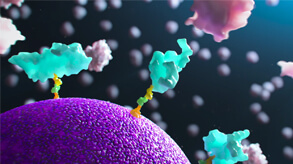Massive-scale proteomics for COVID-19
You’re tackling the unknown. You need as much information as possible.
Access the largest protein profiling platform.
Find patterns no one knew to look for.
With the SomaScan® Assay, you can measure thousands of proteins at once, including >800 proteins involved in immune/inflammatory response. That’s 7x more coverage of COVID-19 associated proteins than any other platform. In response to the pandemic, we’ve simplified our terms, so that researchers who want to analyze COVID-19 samples can get results faster.
Accelerate pandemic response in six ways

Predict progression
Predict which COVID-19 patients will progress and develop severe illness.

Identify disease subtypes
Identify COVID-19 disease complication sub-types in those at risk for severe illness.

Repurpose existing drugs
Repurpose existing drugs by matching them with drivers of COVID-19 progression.

Identify new drug candidates
Rapidly identify protein targets for new drug candidates for COVID-19.

Facilitate vaccine development
Find COVID-19 protein expression patterns to accelerate COVID-19 vaccine development.





